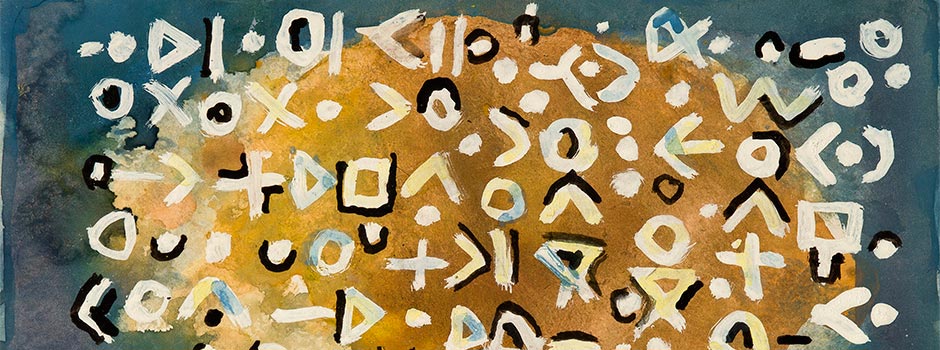
EXHIBITION AT THE AYYAM GALLERY, DUBAI (OCT 5 – NOV 12, 2015) Moustafa Fathi: Towards the Absolute of Nature
Sep 14, 2015 Exhibition

Organised under Ayyam Gallery’s custodianship, the exhibition serves as the first posthumous retrospective of the pioneering Syrian painter. Featuring a diverse selection of paintings and works on paper, 'Towards the Absolute of Nature' highlights Fathi’s theoretical treatment of abstraction through several periods of his oeuvre. Archival materials and the artist’s tools are also on display, including examples of the intricate ‘stamps’ he used in later works.
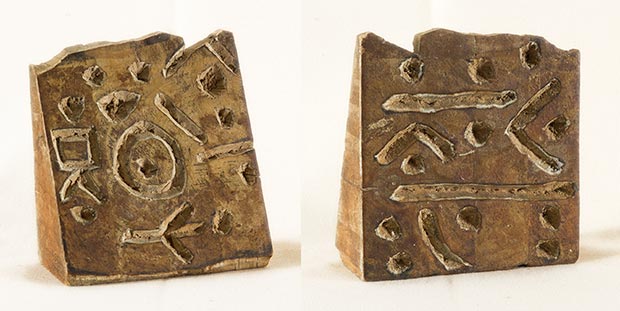 Artist's Stamps / Courtesy of Ayyam Gallery
Artist's Stamps / Courtesy of Ayyam Gallery
During the second half of his career, Fathi developed a painting style based on a system of signs that he adapted from a variety of sources, such as the motifs of Bedouin textiles. Beginning in 1987, the artist researched traditional folk art throughout Syria then produced a series of carved woodblocks based on his findings. When applying his interpretive designs to a panel of dyed or bare canvas, Fathi used plant-based pigments in the tradition of fiber art practices.
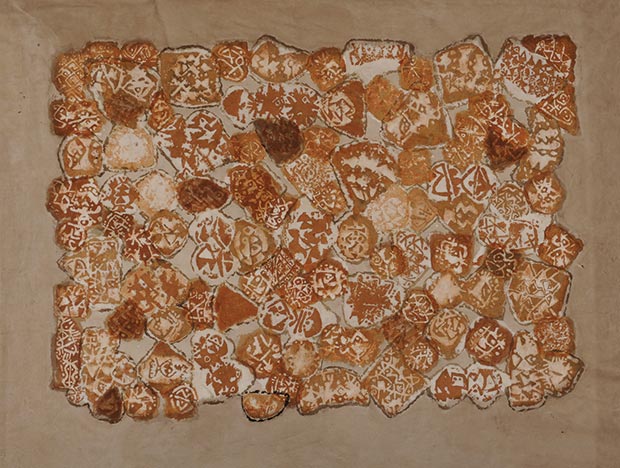 Mustafa Fathi, Untitled, 1985, Mixed media on canvas, 190 x 250 cm / Courtesy of Ayyam Gallery
Mustafa Fathi, Untitled, 1985, Mixed media on canvas, 190 x 250 cm / Courtesy of Ayyam Gallery
 Mustafa Fathi, Untitled, 1986, Mixed media on canvas, 122x207 cm / Courtesy of Ayyam Gallery
Mustafa Fathi, Untitled, 1986, Mixed media on canvas, 122x207 cm / Courtesy of Ayyam Gallery
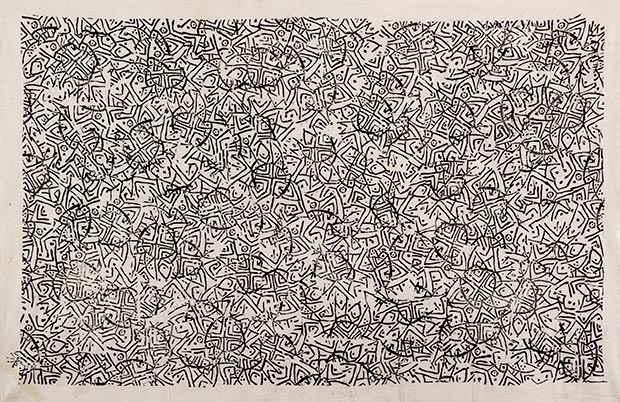 Mustafa Fathi_Untitled, 1986, Mixed media on canvas, 125x190 cm / Courtesy of Ayyam Gallery
Mustafa Fathi_Untitled, 1986, Mixed media on canvas, 125x190 cm / Courtesy of Ayyam Gallery
Although the artist’s works are outwardly inspired by the geometric patterns of Syrian folk art, Fathi sets aside the symmetry and meticulous designs of his sources, allowing his motifs to organically takeover the composition with the vigor of gestural marks. Fathi’s reliance on intuitive methods of painting corresponds with his admiration of artists who used similar approaches such as Paul Klee and Jackson Pollack.
In an eponymous 2010 catalogue on the artist, art historian Michel Bohbot details Fathi’s approach to non-objective art by invoking modern painter Joan Miro who claimed to have "escaped into the absolute of nature." Fathi’s use of manmade materials in place of manufactured tools or media was part of a larger treatise on abstraction.
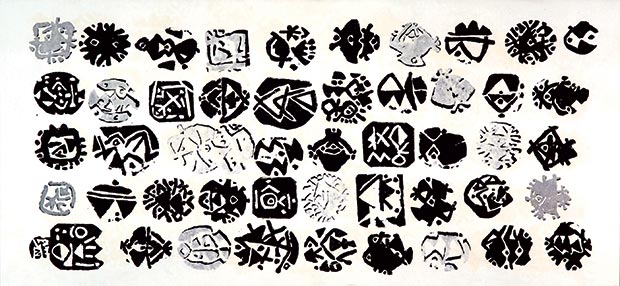 Mustafa Fathi_Untitled, 1989, Mixed media on canvas, 87x186 cm / Courtesy of Ayyam Gallery
Mustafa Fathi_Untitled, 1989, Mixed media on canvas, 87x186 cm / Courtesy of Ayyam Gallery
 Mustafa Fathi_Untitled, 1994, Mixed media on canvas, 139x167 cm / Courtesy of Ayyam Gallery
Mustafa Fathi_Untitled, 1994, Mixed media on canvas, 139x167 cm / Courtesy of Ayyam Gallery
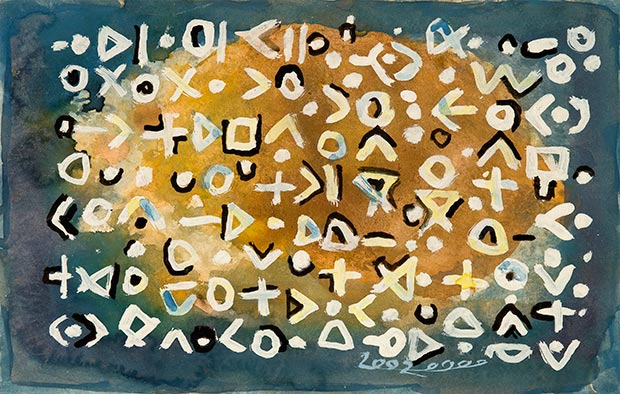 Mustafa Fathi_Untitled, 2002, Mixed media on canvas, 21x33 cm / Courtesy of Ayyam Gallery
Mustafa Fathi_Untitled, 2002, Mixed media on canvas, 21x33 cm / Courtesy of Ayyam Gallery
The artist’s formalism was primarily based on the ‘mechanics’ of nature, the visible patterns that form during different stages of natural phenomena. Yet when speaking about his art, Fathi always clarified that his paintings do not imitate nature. The patterns found in the artist’s works are a reflection of a personal attempt to ‘harmonise’ with the surrounding environment, to capture the ‘simplicity and perfection’ of its forms: the rocks, soil, discarded animal bones, and leaves that sprinkle the Syrian landscape. Evoking the inherent movement of nature, Fathi’s motifs are layered or scattered across the canvas as though rendered from an aerial view, teeming forms that at times resemble the congested grid of Damascus, where he maintained a studio in the heart of the Old City.
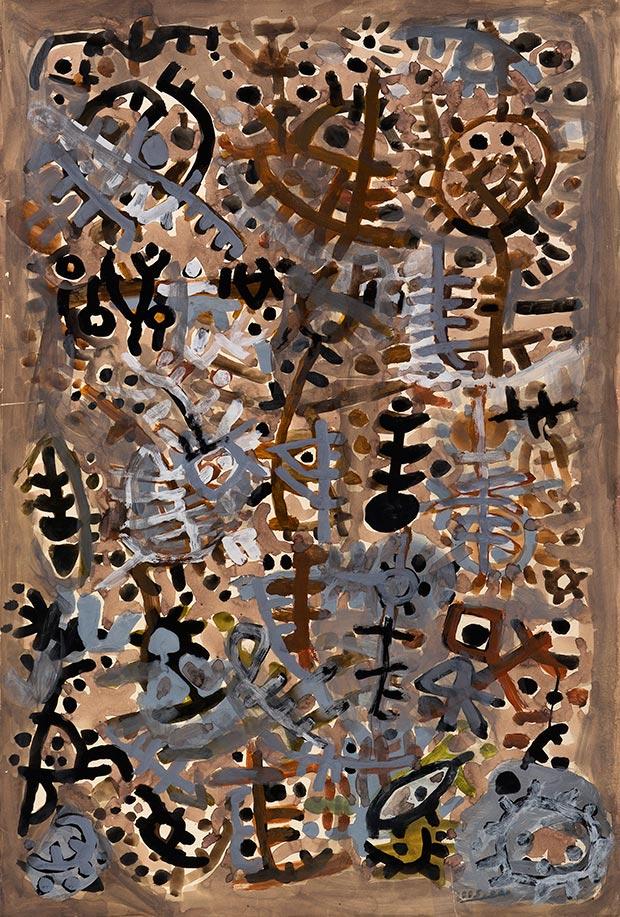 Mustafa Fathi_Untitled, 2005, Mixed media on canvas, 112x75 cm / Courtesy of Ayyam Gallery
Mustafa Fathi_Untitled, 2005, Mixed media on canvas, 112x75 cm / Courtesy of Ayyam Gallery
 Mustafa Fathi_Untitled, 2006, Mixed media on canvas, 23x32 cm / Courtesy of Ayyam Gallery
Mustafa Fathi_Untitled, 2006, Mixed media on canvas, 23x32 cm / Courtesy of Ayyam Gallery
Moustafa Fathi was a pioneer of contemporary Syrian art who began painting during the latter half of Syria’s modernist renaissance. An academic and practicing artist with a rich artistic life that spanned four decades and two continents, Fathi is recognised for establishing new formal and theoretical frontiers with a contemporary painting style rooted in the traditional visual culture of the region. Fascinated by artisan printing materials, he carved hundreds of woodblock stamps after years of intensive research. Applying these templates as small cells of complex designs against flat colour planes, he created elaborate mixed-media works that bring to mind the automatic brushwork of Abstract Expressionism and the sophisticated pictography of ancient hieroglyphs. Producing an inherent tension in compositional space, this symbolist approach reduces nature to its most organic state, as pockets of dynamic force are contained by infinite vastness.
Born in Deraa, Syria, Moustafa Fathi (1942-2009) received a Diploma in Engraving from the Faculty of Fine Arts, University of Damascus in 1966 and a Diploma in Engraving and Lithography from the Ecole Superieure des Beaux Arts, Paris in 1978. Between 1966 and 1987, he taught at the Faculty of Fine Arts, a position that furthered his contributions to the Syrian art scene. Throughout his career he exhibited at home and abroad, most notably in a number of prominent European institutions, including the Picasso Museum in Antibes, which houses one of his works. The last exhibition held for the artist during his lifetime was organised by the Latakia Museum of Modern Art in 2008.
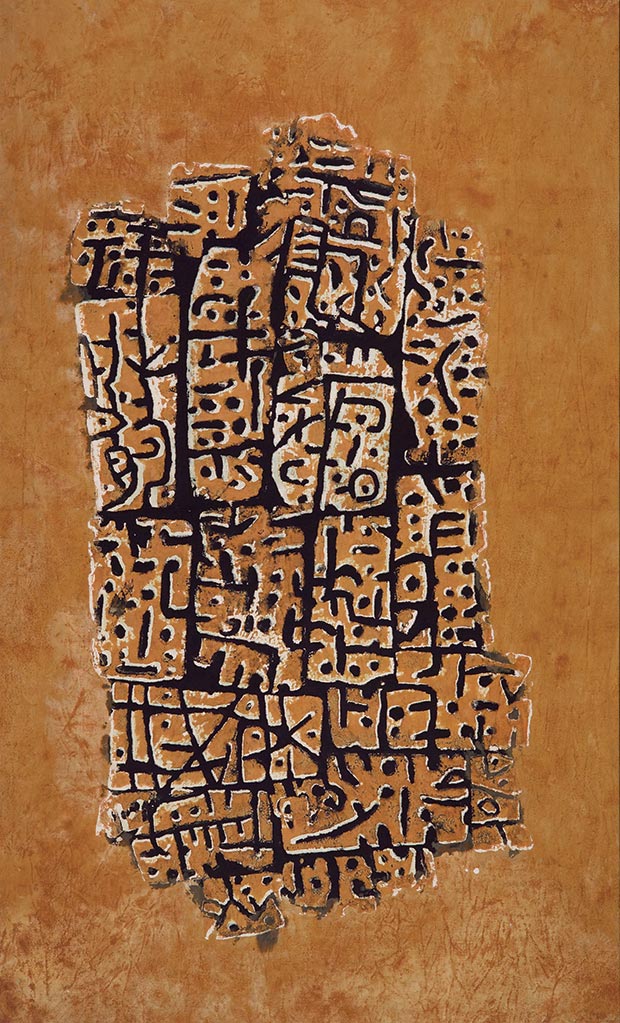 Mustafa Fathi_Untitled, 2006, Mixed media on canvas, 141x85 cm / Courtesy of Ayyam Gallery
Mustafa Fathi_Untitled, 2006, Mixed media on canvas, 141x85 cm / Courtesy of Ayyam Gallery
Founded in 2006, Ayyam Gallery is a leading arts organisation that manages the careers of diverse, established and emerging artists from the Middle East. Blue-chip art spaces in Beirut, Dubai, and London, a series of collaborative projects in the United States, Europe, and Asia, and a multinational non-profit arts programme have furthered the gallery’s mandate of expanding the parameters of international art by introducing the dynamic art of the region to a global audience. With its widely respected multilingual publishing division and a custodianship programme that manages the estates of pioneering artists, Ayyam Gallery has also spearheaded recent efforts to document the region’s art history.
Comments
Add a comment